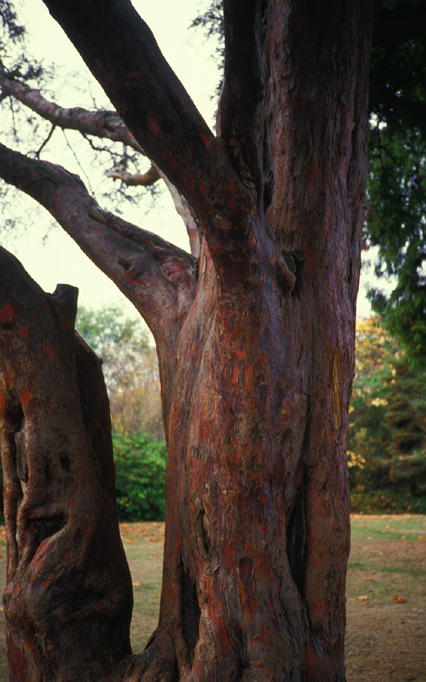
|
Medicinal Plants
|
| Familiar medicinal herbs from elsewhere, such as
Echinacea or the Brazilean una de gato (Unicaria
tomentosa) are, for all their glory and potency, not necessarily greater healers than a few wild weeds or
flowers of Seattle. Some plants growing wild in Seattle, or cultivated in
our gardens, can be real lifesavers. Many of us study and use herbs
for medicine and health: naturopathic physicians, wise women, witch
doctors, wildcrafters who collect "botanicals," etc. Compared to
such professionals, my knowledge of the healing properties of plants is
low. But a few things I have learned. |
| When my friends or I are ill, sometimes I inquire if any plants
available hereabouts can be used efficaciously. After all, it's worth a try. Here
are a few examples of Seattle plants which have been recommended
as helping certain ailments. Don't use any of these unless you know
exactly what you're doing. Cascara bark (Rhamnus
Purshiana) is well known for its use as a laxative; it can also help rheumatoid arthritis and eczema.
Yew bark (Taxus brevifolia) (PHOTO ABOVE) has an anti-cancer compund, taxol.
Feverfew (Tanacetum Parthenium) can combat migraines. Black mustard
(Brassica nigra) is used as a poultice if one suffers from acne, or as a tea to
cure hiccups. Canada fleabane or horseweed (Erigeron
canadensis) heals diarrhea. Peppermint (Mentha
piperita) and fennel (Foeniculum vulgare) aid poor digestion. Comfrey
(Symphytum officinale) is applied to wounds and burnssort of like the houseplant called
Aloe vera. Fresh thyme (Thymus spp.) is good for coughs. Oregon grape
(Mahonia or Berberis Aquifolium) is used for various skin problems including fungus. The
list goes on and on --but you get the picture. |
There's one plant said to be excellent for fighting skin cancer. Since
the incidence of this carcinogen is increasing, due largely to excessive
UV light caused by atmospheric pollution destroying the ozone layer
(hence our banning of aerosol chlorofluorocarbons), treatment is a
growing concern. It may make one want to invest in suntan lotion stocks. But
how about a cure? I seek a willing dermatologist who will (for a fair fee)
check me thoroughly for "sun cancer" spots, then let me apply the juice of
this particular plant. Here's the deal: if the herb fails to bring about
any noticeable improvement within 8 weeks, then high-tech treatment methods can be used --at my cost. I won't name the plant here, since there
is no point in getting people's hopes up or inviting suits. But if the
remedy works, as attested by a physician, then we will publicize the results in
the proper channels. Any interested doctors please contact me. Let's
find out. You might say I prefer "self serve" medical treatment over
"full serve."
|
(originally published in The Seattle Weekly, August 1997)
Back |
|
|

